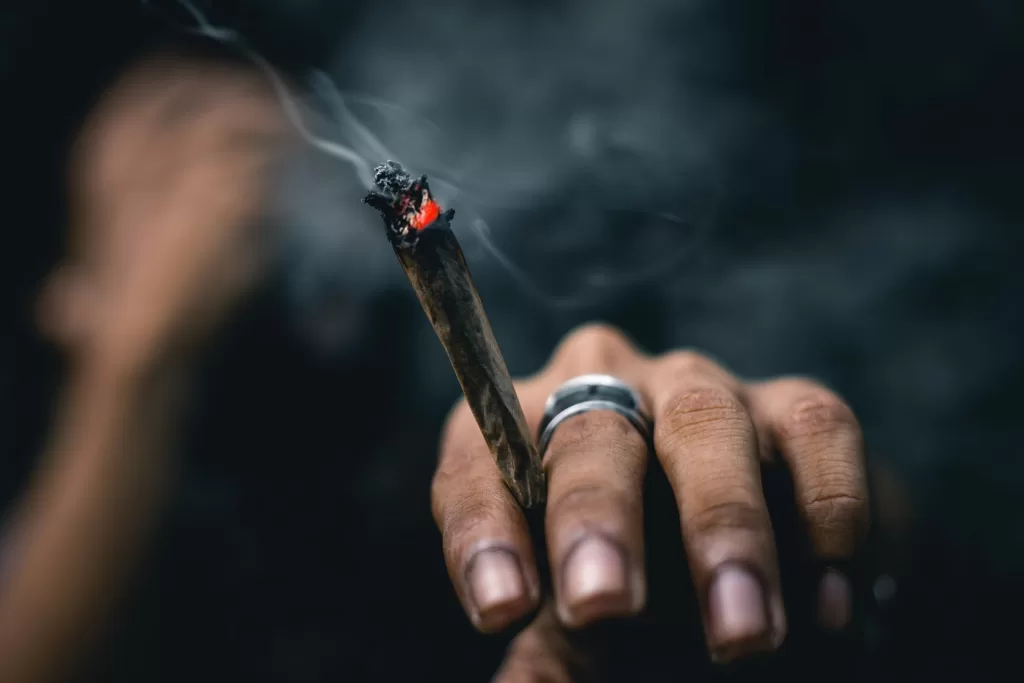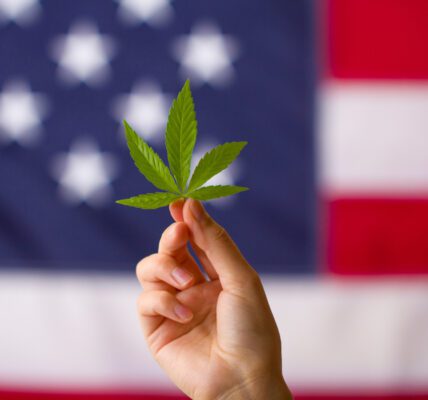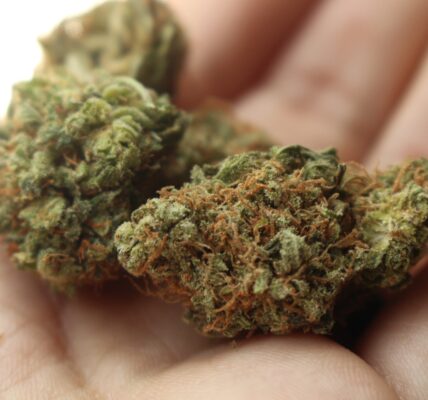Which of These Cannabis Facts Did You Find Most Interesting?


Welcome to our 100th article celebration, where we embark on an extraordinary journey into the world of cannabis! In this special edition, we’re thrilled to present 100 mind-blowing cannabis facts that will captivate your curiosity and deepen your appreciation for this incredible plant. As we commemorate this milestone, we invite you to join us on an exploration of the diverse aspects of cannabis, spanning history, culture, science, and beyond. Whether you’re a seasoned enthusiast or new to the world of cannabis, prepare to be amazed as we unravel the fascinating secrets and surprising revelations that make cannabis such a remarkable subject. So, let’s dive in and celebrate our 100th article by uncovering the extraordinary world of cannabis!
- Cannabis, also known as marijuana, comes from the Cannabis plant, which has been cultivated for thousands of years for various purposes.
- The two primary species of the Cannabis plant are Cannabis sativa and Cannabis indica, each with different characteristics and effects.
- The cannabis plant contains over 100 chemical compounds known as cannabinoids, with the most well-known being delta-9-tetrahydrocannabinol (THC) and cannabidiol (CBD).
- THC is the psychoactive compound in cannabis that produces the “high” sensation, while CBD is non-psychoactive and is believed to have various therapeutic effects.
- Cannabis has been used for medicinal and recreational purposes throughout history, dating back thousands of years to ancient civilizations in Asia, Africa, and the Americas.
- The oldest recorded use of cannabis as a medicinal herb dates back to ancient China in 2737 BCE, where it was recommended for treating various ailments.
- The first recorded use of cannabis as a recreational drug was in ancient India, where it was consumed as part of spiritual and religious ceremonies.
- Cannabis was brought to the Americas by European colonizers and was widely cultivated for its fibers, which were used to make textiles, ropes, and paper.
- The United Nations estimates that over 192 million people worldwide use cannabis, making it one of the most widely used psychoactive substances.
- The Netherlands was the first country to decriminalize cannabis in the 1970s and implemented a system of regulated coffee shops where cannabis could be purchased and consumed.
- Uruguay became the first country to legalize the production, sale, and consumption of cannabis for recreational purposes in 2013.
- The endocannabinoid system, discovered in the 1990s, is a biological system present in humans and other animals that interacts with cannabinoids. It plays a role in regulating various physiological processes.
- Cannabis can be consumed in various forms, including smoking, vaporizing, eating edibles, using tinctures, and applying topically.
- The effects of cannabis can vary depending on the strain, dosage, and individual factors. Common effects include relaxation, euphoria, altered perception, increased appetite, and pain relief.
- Cannabis has been used to alleviate symptoms of various medical conditions, including chronic pain, nausea, muscle spasms, epilepsy, and cancer-related symptoms.
- The U.S. Food and Drug Administration (FDA) has approved a cannabis-derived medication called Epidiolex for the treatment of certain types of epilepsy.
- The terpenes in cannabis are responsible for its distinct aroma and can contribute to its therapeutic effects. Common terpenes found in cannabis include myrcene, limonene, and pinene.
- Cannabis has been shown to have potential antibacterial and antifungal properties, which may contribute to its use in traditional medicine practices.
- Hemp is a variety of cannabis that contains low levels of THC and is primarily cultivated for industrial purposes, such as making textiles, building materials, and biofuels.
- The first American flag made by Betsy Ross was sewn using hemp fabric, highlighting the historical connection between cannabis and American culture.
- The phrase “420” has become synonymous with cannabis culture and is often used as code for smoking or celebrating cannabis on April 20th.
- Some studies suggest that cannabis may enhance creativity by increasing divergent thinking and making connections between seemingly unrelated concepts.
- Cannabis can be used to produce environmentally friendly alternatives to various products, such as biodegradable plastics, sustainable clothing, and renewable energy sources.
- The United Nations estimates that over 188 million people worldwide use cannabis for recreational or medical purposes.
- Cannabis is known to have different strains, each with its unique characteristics, flavors, and effects. Some popular strains include Sour Diesel, Blue Dream, and OG Kush.
- Cannabis can be used to make a wide range of products, including oils, tinctures, concentrates, creams, and even beverages.
- The legality of cannabis varies widely across countries and states, ranging from complete prohibition to full legalization for both medical and recreational use.
- Cannabis has been used in religious and spiritual practices throughout history, including by various ancient cultures and modern-day Rastafarians.
- The discovery of the endocannabinoid system in the human body has opened up new avenues for cannabis research and potential therapeutic applications.
- The first medical cannabis program in the United States was established in California in 1996, paving the way for the introduction of similar programs in other states.
- The cannabis industry has experienced significant growth in recent years, creating job opportunities and economic benefits in many regions.
- Some countries, such as the Netherlands and Canada, have implemented regulated cannabis coffee shops and dispensaries to provide a safe and controlled environment for cannabis consumption.
- Cannabis has a long history of use in traditional medicine systems, including Ayurveda, Chinese medicine, and Native American healing practices.
- Hemp-derived CBD products have gained popularity for their potential therapeutic benefits, including relief from pain, anxiety, and inflammation, without the psychoactive effects of THC.
- The United States is the largest consumer of cannabis globally, with an estimated annual spending of billions of dollars on cannabis-related products.
- Cannabis can be used as a renewable resource, with the potential to reduce deforestation, carbon emissions, and dependence on fossil fuels.
- The cultural significance of cannabis is celebrated in events and festivals worldwide, such as the annual Hash Bash in Ann Arbor, Michigan, and the High Times Cannabis Cup.
- Cannabis has been decriminalized or legalized in several U.S. states, leading to a shift in public perception and increased support for cannabis policy reform.
- The future of cannabis holds promising developments, including ongoing research into its therapeutic potential, innovations in cultivation techniques, and the exploration of new cannabis-based products.
- The history and cultural significance of cannabis make it a fascinating subject of study and exploration, capturing the interest and curiosity of people from all walks of life.
- Cannabis has been used as a natural dye throughout history, creating vibrant colors in textiles and artwork.
- The leaves of the cannabis plant are palmately compound, typically having serrated leaflets, with a characteristic shape that is often associated with the plant.
- Cannabis can be cultivated both indoors and outdoors, with each method offering unique advantages and challenges.
- The aroma of cannabis can vary widely depending on the strain, with scents ranging from fruity and citrusy to earthy and diesel-like.
- Cannabis can have different effects on individuals, with some people experiencing increased focus and productivity, while others may feel more relaxed and introspective.
- The cannabis plant has been used for paper production for centuries, with its fibers creating a durable and sustainable alternative to traditional wood pulp.
- Cannabis seeds, also known as hemp hearts, are highly nutritious and rich in protein, essential fatty acids, and other beneficial nutrients.
- Cannabis can be used to create various types of extracts, including hashish, hash oil, and cannabis concentrates, which are highly potent forms of the plant.
- The smell of cannabis can be masked or reduced by using techniques such as air filtration systems, scented candles, or odor-absorbing sprays.
- Cannabis has been found to have potential anti-inflammatory properties, which may be beneficial for conditions such as arthritis and autoimmune diseases.
- The use of cannabis for spiritual and religious purposes can be traced back to ancient cultures, where it was believed to facilitate communication with higher powers and promote enlightenment.
- Cannabis can have different effects on appetite, with some strains known to increase hunger (the “munchies”) and others having appetite-suppressing properties.
- Cannabis can be infused into various types of food and beverages, including brownies, cookies, candies, teas, and even gourmet meals.
- Cannabis use has been associated with certain risks, such as impaired coordination and judgment, and it is important to use it responsibly and in moderation.
- Cannabis has been found to have potential neuroprotective properties, with some studies suggesting it may help protect the brain against certain conditions and injuries.
- The use of cannabis for medical purposes is supported by a growing body of scientific research, with evidence indicating its potential efficacy in treating various conditions.
- Cannabis has been used in traditional medicine systems for its analgesic properties, providing relief from pain and discomfort.
- The potency of cannabis can vary widely depending on factors such as strain, cultivation methods, and processing techniques.
- Cannabis can be used as a natural insect repellent, with some studies suggesting that the aroma of the plant can deter certain pests.
- Cannabis has been found to have potential anti-anxiety effects, with some individuals reporting feelings of relaxation and calmness after using it.
- The cannabis industry has led to the development of innovative products and technologies, such as vaporizers, dab rigs, and cannabis-infused skincare products.
- Cannabis can be used to create environmentally friendly building materials, such as hempcrete, which is a sustainable alternative to traditional concrete.
- The consumption of cannabis can lead to short-term memory impairment, with some individuals experiencing difficulty in recalling recent events or information.
- Cannabis has been found to have potential antiemetic properties, making it effective in relieving nausea and vomiting associated with certain medical conditions and treatments.
- The cannabis plant has a long history of use in textiles, with its fibers being spun into yarn and woven into fabrics for clothing and other applications.
- Cannabis has been found to have potential antimicrobial properties, with some studies suggesting that it may help combat certain types of bacteria and fungi.
- The use of cannabis for relaxation and stress relief is common, with many individuals using it as a means to unwind and promote a sense of calm.
- Cannabis can be used to create sustainable biofuels, with some researchers exploring its potential as an alternative to fossil fuels.
- The cultural and social acceptance of cannabis has evolved over time, with attitudes shifting towards greater recognition of its potential benefits and responsible use.
- Cannabis can interact with certain medications, and it is important to consult with a healthcare professional before using cannabis alongside other medications.
- The aroma of cannabis can be influenced by factors such as terpenes, curing methods, and storage conditions, resulting in a wide range of scent profiles.
- Cannabis has been found to have potential anti-inflammatory effects, which may contribute to its analgesic properties and potential therapeutic benefits.
- The cannabis plant is dioecious, meaning it has separate male and female plants, with female plants typically producing higher levels of cannabinoids.
- Cannabis can be used to create sustainable packaging materials, such as hemp-based bioplastics, which are biodegradable and reduce environmental impact.
- The use of cannabis for pain management is widespread, with many individuals reporting relief from chronic pain conditions through its use.
- Cannabis can have different effects on sleep, with some strains known for their sedative properties and ability to promote relaxation and restful sleep.
- The cannabis industry has given rise to a variety of job opportunities, including cultivation, processing, retail, marketing, and research positions.
- Cannabis can be used to create eco-friendly textiles, with hemp fibers being highly durable, breathable, and resistant to pests and mold.
- The use of cannabis for spiritual and ceremonial purposes is deeply rooted in various indigenous cultures around the world.
- Cannabis has been found to have potential anticonvulsant properties, with some studies suggesting it may help reduce the frequency and severity of seizures.
- The cannabis plant can be grown using organic and sustainable farming practices, minimizing the use of synthetic fertilizers and pesticides.
- Cannabis can be used to create natural personal care products, such as soaps, lotions, and balms, which may have therapeutic benefits for the skin and body.
- The use of cannabis for creative pursuits is common, with many artists, musicians, and writers reporting enhanced creativity and inspiration after using it.
- Cannabis has been found to have potential antipsychotic properties, with some studies suggesting it may help alleviate symptoms of certain mental health conditions.
- The use of cannabis for socializing and connecting with others is prevalent, with many individuals using it as a means to foster social bonds and enhance social experiences.
- Cannabis can be used to create sustainable and biodegradable plastics, reducing the reliance on non-renewable petroleum-based plastics.
- The popularity of cannabis strains can vary over time, with new strains constantly emerging and gaining recognition for their unique characteristics.
- Cannabis can be used as a natural alternative to synthetic pain medications, with some individuals finding relief from chronic pain conditions through its use.
- The use of cannabis for spiritual and medicinal purposes is deeply intertwined in ancient traditions and cultural practices around the world.
- Cannabis can be used as a natural insecticide, with some studies suggesting that the plant’s compounds may help repel or eliminate certain pests.
- The use of cannabis for relaxation and stress relief has been documented for centuries, with individuals seeking its calming effects to unwind and find tranquility.
- Cannabis can be used to create sustainable and biodegradable packaging materials, reducing the environmental impact of single-use plastics.
- The use of cannabis for pain management is supported by a growing body of scientific research, with evidence suggesting its potential efficacy in relieving both acute and chronic pain.
- The cannabis industry has sparked innovation in product development, with the introduction of infused beverages, topicals, and other novel formulations.
- Cannabis can be used to create sustainable biofuels, offering a renewable and environmentally friendly alternative to fossil fuels.
- The cultural and social acceptance of cannabis is on the rise, with increasing legalization efforts and public support for responsible cannabis use.
- Cannabis has been used for centuries as a natural remedy for various ailments, with ancient civilizations harnessing its therapeutic properties.
- The use of cannabis for creative pursuits is widely embraced, with many artists and creators using it to enhance their creative process and stimulate imagination.
- Cannabis can be used to create sustainable textiles, such as hemp fabric, which is known for its strength, breathability, and durability.
- The future of cannabis holds great potential, with ongoing research, advancements in cultivation techniques, and evolving social attitudes contributing to its continued exploration and utilization.
As we reach the conclusion of our 100th article, we extend our heartfelt gratitude for your support and engagement throughout this journey. We hope that this compilation of mind-blowing cannabis facts has not only entertained and informed but has also deepened your understanding of the immense potential and significance of cannabis. From its ancient roots to its modern-day applications, cannabis continues to inspire awe and intrigue, pushing the boundaries of science, culture, and medicine. We are honored to have shared this milestone with you, and we look forward to many more exciting explorations together. Thank you for being a part of our 100-article celebration, and here’s to the next chapter in our journey of cannabis discovery!
We hope you found “100 Mind-Blowing Cannabis Facts: Prepare to be Amazed” formative. If you’d like to see more of our lists, click here! Make sure to follow us on Instagram for all our latest articles!
















